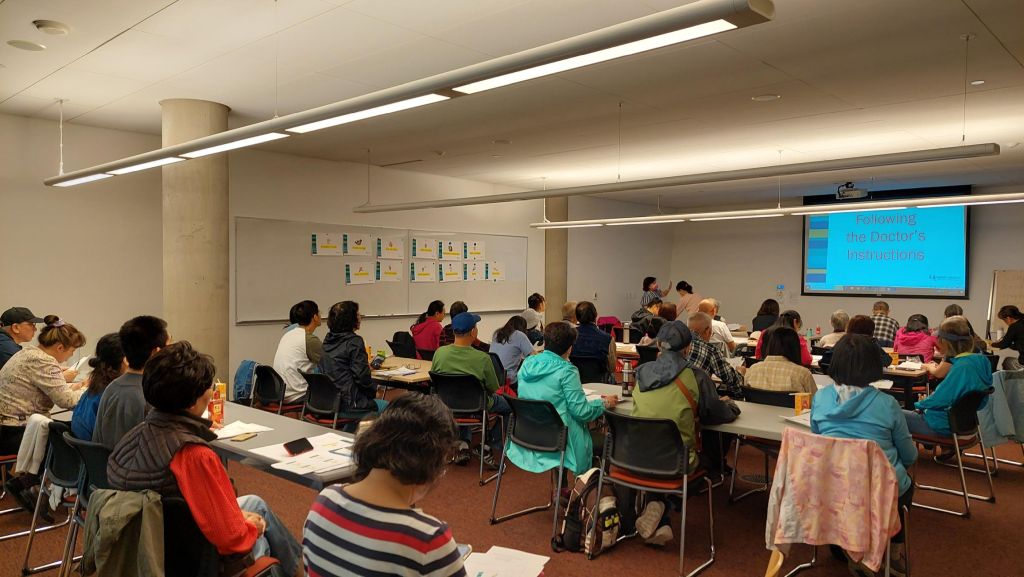British Columbia has many cities and towns.
No matter where you are in British Columbia, the Immigrant Settlement & Integration Program provides online services for eligible immigrants, refugees, and their families. Please register with us to access online services.
We are happy to provide in-person services at multiple locations across Greater Vancouver (the Lower Mainland), and in Fort St. John (Northeast). Contact us to find out more about our services.
Regions of British Columbia
British Columbia is divided into 8 Development and Economic Regions. Each of B.C.'s regions is distinct and has its own unique geography, climate, economy, history and cultural diversity. Find out what each region can offer you as a place to live and work.
Sources: WelcomeBC, WorkBC, and the National Household Survey (NHS) of Statistics Canada (StatCan)

Image Source: WorkBC - Used with permission
- The Vancouver Island/Coast region is on the west coast of B.C. The region is covered in forests and surrounded by beautiful coastlines, complimented by its temperate climate.
- The region's economy thrives on the service sector including health care, public administration, accommodation and tourism. Logging and fishing industries also play an important role in the economy.
- It includes B.C.'s capital city of Victoria, several medium-sized cities like Nanaimo, and many smaller oceanside communities. Victoria has a population of 76,000 of which approximately 18% are immigrants.
- The Mainland/Southwest region is B.C.'s most populous region with 2.8 million residents. It is the home to the Greater Vancouver area and is one of the most ethnically diverse areas in Canada. It offers economic opportunities, a mild climate, an active lifestyle and all the amenities of a vibrant urban centre.
- Major industry sectors include trade and financial services, transportation, education, secondary manufacturing, tourism and agriculture.
- The Mainland/Southwest region is one of the most ethnically diverse regions in Canada. 3% of the population are Aboriginal. 37.3% are immigrants and 41.4% belong to a visible minority group.
- The Mainland/Southwest region includes the Lower Mainland, Fraser Valley, Squamish and Whistler, and small coastal communities along the Sunshine Coast. Most of the Immigrant Settlement & Integration Program offices are found in the Lower Mainland.
- The Thompson-Okanagan region is located in the interior of B.C. and is known for its sunny climate, fruit orchards, vineyards, and beautiful landscapes.
- Its diverse economy is based on agriculture, the service sector, logging and manufacturing.
- Kelowna is the largest city in the Thompson-Okanagan region. The Greater Kelowna area has a population of 176,500 of which approximately 14% are immigrants.
- The Kootenay region’s geography includes many rivers, lakes, waterfalls, and hot springs. It is one of Canada's leading destinations for outdoor activities including hiking, mountain biking, skiing, fishing and river rafting.
- Important industries in the Kootenay region include coal production, mining and logging.
- Cranbrook is the largest city in the Kootenay region with a population of 24,500 of which approximately 7% are immigrants.
- The Cariboo region is located in central B.C. and is covered in open landscapes and forests.
- Industries such as mining and forestry play a strong role in the Cariboo region's economy.
- Prince George is the largest city in the Cariboo region. The Greater Prince George area has a population of 83,000 of which approximately 10% are immigrants.
- The North Coast region borders the Pacific Ocean. The North Coast offers easy access to a relaxed lifestyleis with a landscape covered in forests, mountains and rugged coastlines.
- The North Coast economy includes commercial fishing, logging and mining. The economy has expanded at the Port of Prince Rupert with an aluminium smelter in Kitimat and preparations for liquefied natural gas projects.
- Prince Rupert is the largest city in the North Coast region, with a population of 13,000 of which approximately 11% are immigrants.
- The Nechako region is found in the north of B.C. and has a vast area and low population. Nechako's remote wilderness provides a relaxed setting for rural living.
- The economy strives on its natural resources, particularly mining, forestry, oil and gas industries. Many companies actively search for minerals in the area.
- Smithers is the largest town in the Nechako region with a population of 5,300 of which approximately 10% are immigrants.
- The Northeast region is just east of the Rocky Mountains where you'll find the Peace River valley. The region is filled with mountains, forests, and lakes. The region's economy is based on its natural resources such as natural gas production, coal mining, logging, wood products manufacturing and agriculture.
- The region has the youngest regional population in BC. Fort St. John is the largest city in the Northeast region with a population of 26,000 of which approximately 5% are immigrants. Recent immigrants comprised more than a quarter of all immigrants.
- The Immigrant Settlement & Integration Program also offers in-person services in Fort St. John.










 July 30, 2024
July 30, 2024
 Surrey & Fraser Valley
Surrey & Fraser Valley